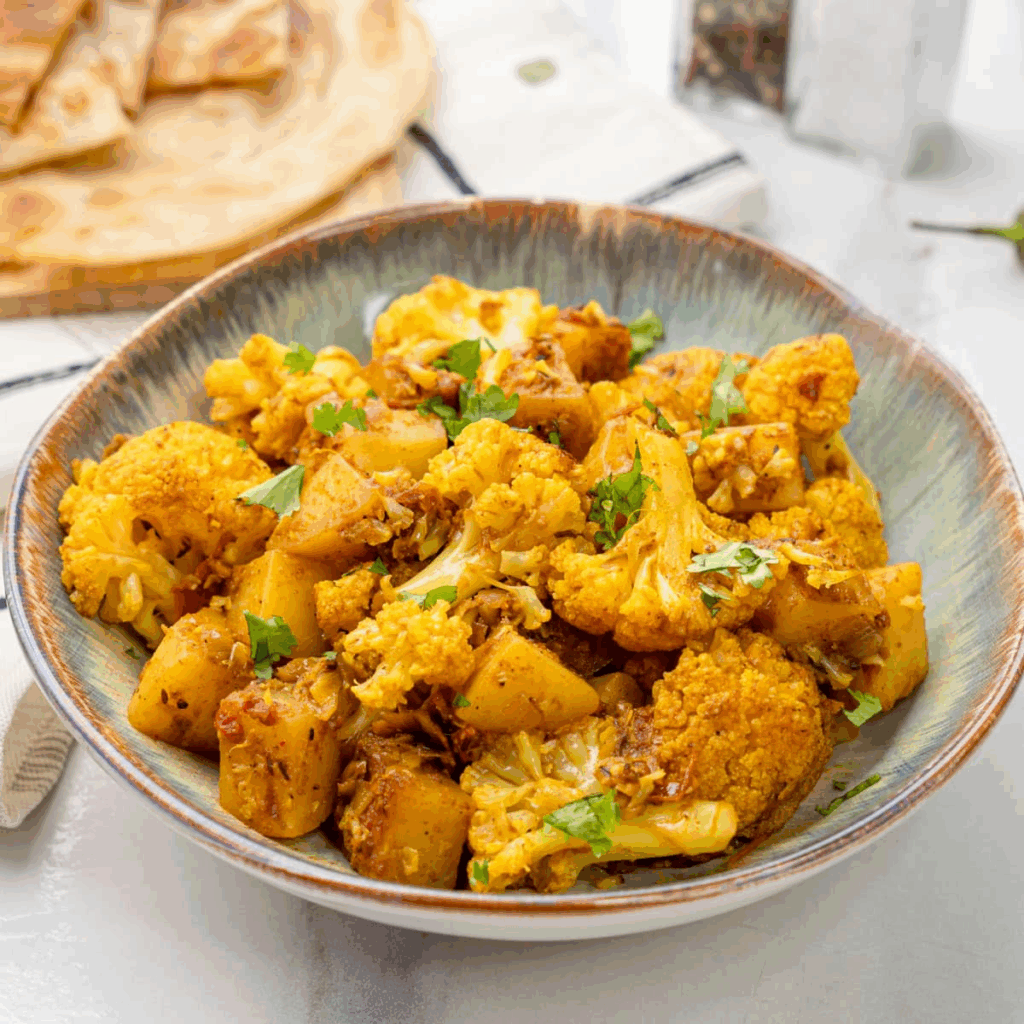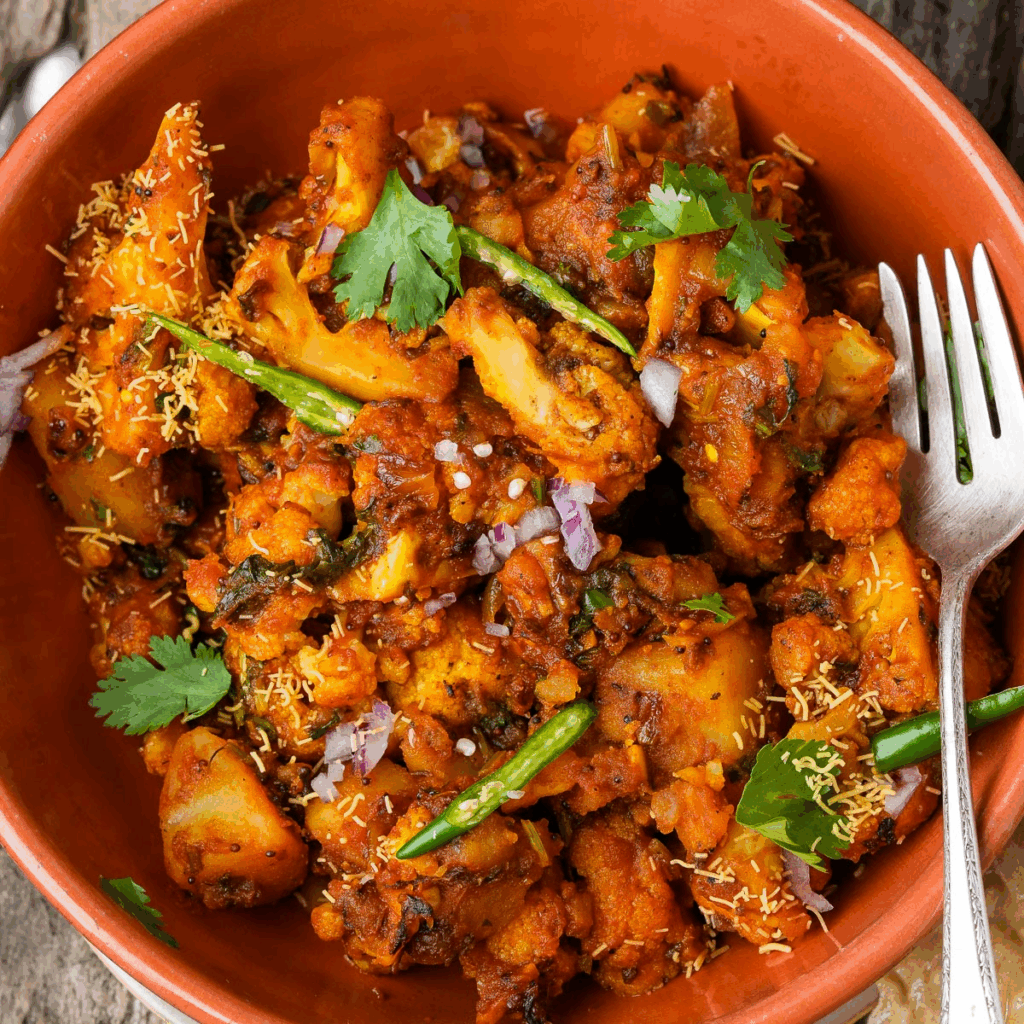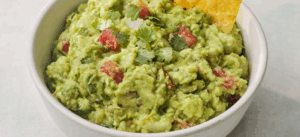How to Cook Aloo Gobi the Indian Way – A Chef’s Guide to Authentic Flavor

There’s something effortlessly comforting about a good Aloo Gobi. Maybe it’s the way soft, golden potatoes melt into spiced cauliflower, or how it pairs with nearly anything on the table—rice, roti, or dal. I’ve cooked this humble yet iconic vegetarian dish countless times, from street-style batches to plated restaurant versions.
- The Core of Aloo Gobi: What It Really Is
- Choosing the Right Ingredients and Their Prep
- Cooking Time Comparison Across Methods
- The Dry vs Saucy Debate: Which One Do I Make?
- Building Flavor: My Approach to Spice Layering
- Regional Aloo Gobi Styles I’ve Cooked
- What You Can Add (Only If It Fits)
- Pairing Aloo Gobi with Other Dishes: What I Serve Together
- Alternative Cooking Methods for Aloo Gobi at Home
- How I Store and Reheat Aloo Gobi Without Losing Texture
- Plating and Presentation: From Home Bowl to Elegant Plate
- Regional Aloo Gobi Styles Compared
- Cultural Significance and Comfort Factor of Aloo Gobi
- Aloo Gobi in Modern Diets and Meal Planning
- Creative Twists I’ve Tried That Actually Work
- FAQ – From My Kitchen to Yours

The Core of Aloo Gobi: What It Really Is
Aloo Gobi is a North Indian dish built around two central ingredients: aloo (potatoes) and gobi (cauliflower). These two vegetables are cooked together with a medley of spices that can vary slightly by region or family tradition.
What I love about Aloo Gobi is how versatile it is. At its core, it’s a dry-style sabzi (vegetable dish), lightly coated in oil and spices rather than drowned in sauce. It allows the ingredients to shine—the potato should be soft but never mushy, and the cauliflower slightly crisped on the edges but tender inside.
The flavor profile relies on turmeric, cumin, coriander, and sometimes garam masala. Onion, ginger, garlic, and tomato build the flavor base. The spices don’t overpower, they layer in warmth and complexity.
Choosing the Right Ingredients and Their Prep
Over time, I’ve learned that ingredient prep makes or breaks this dish. Not just what you choose, but how you cut and treat them.
I always go for waxy potatoes like Yukon Gold—they hold their shape better than starchy russets. I peel them and cube into even pieces about ¾ inch thick so they cook uniformly.
For cauliflower, I prefer breaking it into medium florets, slightly larger than the potato pieces. If they’re too small, they fall apart by the time the potatoes are done. A quick rinse and thorough drying is essential; excess water ruins the browning.
I finely chop the onions and ginger. Garlic is optional, but I usually mince it in. I also keep tomatoes ready—either finely chopped fresh ones or a tablespoon of tomato puree if I want a more concentrated flavor.
Spices are pre-measured into a small dish for efficiency: cumin seeds, turmeric, ground coriander, red chili powder, and garam masala. This mise en place keeps things moving smoothly once the oil heats up.

Cooking Time Comparison Across Methods
I’ve prepared Aloo Gobi using every tool imaginable depending on the kitchen I’m working in—gas range, convection oven, even a microwave for quick versions. Here’s how cook time compares:
| Cooking Method | Prep Time | Cook Time | Total Time | Notes |
| Stovetop Skillet | 10 min | 20–25 min | ~35 min | Most control, best for traditional dry style |
| Oven-Roasted | 10 min | 35–40 min | ~50 min | Great texture, ideal for crispy cauliflower |
| Slow Cooker | 10 min | 3–4 hrs | ~3.5–4.5 hrs | Set-and-forget, but must finish with oil-based tadka |
| Microwave (covered) | 10 min | 12–15 min | ~25 min | Quickest, good for soft texture, not crisp |
| Instant Pot | 10 min | 4–5 min | ~20 min | Efficient, but can overcook if not monitored |
Personally, I reach for the stovetop or oven when I want the best flavor and texture. Slow cooker is excellent for meal prep, especially when I add the finishing tadka later for brightness.
The Dry vs Saucy Debate: Which One Do I Make?
Traditional Aloo Gobi is typically a dry sabzi—it’s not meant to be swimming in sauce. But over time, I’ve adapted it depending on what it’s being served with or what my guests prefer.
When I serve Aloo Gobi with dal tadka and rice, I stick to the dry version. It gives structure and absorbs the sauce on the plate like a sponge. But when I pair it with plain roti or paratha, a slightly moist version works beautifully.
For a saucier Aloo Gobi, I add chopped tomatoes early and let them break down. A splash of water or stock loosens things just enough to coat the vegetables in a flavorful gravy.
In restaurants, I’ve done both. For lunch thalis or buffet-style service, the dry style is cleaner and easier to hold. For plated mains, a saucier Aloo Gobi with a finishing swirl of kasuri methi looks and tastes refined.

Building Flavor: My Approach to Spice Layering
In Indian cooking, spices aren’t dumped in all at once. Timing matters, and so does temperature. With Aloo Gobi, I build flavor in three distinct phases.
First comes tempering (tadka): I heat oil and bloom whole cumin seeds until they sizzle and darken slightly. This brings out nutty bitterness that anchors the dish. At this point, I may also add a pinch of hing (asafoetida) for savory depth.
Next, I add aromatics—onion, ginger, and sometimes garlic. They cook slowly until soft and lightly golden. Only after that do I add ground spices: turmeric, red chili powder, coriander. These toast in the oil for just 30 seconds. You’ll smell the transformation when it happens.
Finally, I add the vegetables and a touch of salt. They absorb those toasted spices immediately. Garam masala goes in at the very end, after cooking, to preserve its complex aroma.
This layered technique ensures the dish has depth, not just heat. A rushed Aloo Gobi tastes flat—like boiled vegetables with spice powder. A carefully layered one tastes like home.
Regional Aloo Gobi Styles I’ve Cooked
Though commonly associated with North Indian cuisine, I’ve encountered and cooked versions of Aloo Gobi across India, and even in the UK diaspora. Each has a local twist.
Punjabi-style is the most robust. It uses onion, tomato, and a slightly moist finish with more oil. Often, I’ll add green chilies for extra punch. It’s bold, filling, and great with buttery naan.
Gujarati Aloo Gobi sometimes has mustard seeds and a touch of sweetness from jaggery. The spices are milder, and it’s often served with plain khichdi or steamed rice.
South Indian variants aren’t traditional, but I’ve seen Aloo Gobi made with curry leaves, mustard seeds, and coconut oil in Tamil Nadu homes. It’s lighter, more aromatic, and pairs well with rice or dosa.
British-Indian takeout versions often include more oil and tomatoes, and sometimes green peas. They’re richer, saucier, and designed to complement meat-based curries.
When I cook for events, I choose the style depending on what’s accompanying it—dry Punjabi if it’s part of a thali, or saucier UK-style if I’m serving it as the main dish with chapati.

What You Can Add (Only If It Fits)
While I stand by the simplicity of classic Aloo Gobi, sometimes I introduce a few extras—especially when stretching the dish or playing with flavor balance.
If I’m low on cauliflower, I bulk up with green peas. They add color and sweetness, and they work naturally with the spice base.
Sometimes I stir in baby spinach right at the end. It wilts and adds moisture and freshness without overpowering the main flavor. I’ve also used fenugreek leaves (methi) to add bitterness and depth.
When cooking for kids or spice-sensitive guests, I reduce chili powder and add a touch of yogurt or cashew paste for a creamier texture. It turns Aloo Gobi into more of a luxurious curry than a sabzi.
And once, at a fusion event, I added roasted chickpeas and garnished with pomegranate. It worked because I kept the spice levels classic and used lemon juice to balance the sweetness.
If you want to be creative, keep the base honest—and build from there with restraint.
Pairing Aloo Gobi with Other Dishes: What I Serve Together
Aloo Gobi is filling but not heavy, which makes it the perfect companion to many Indian staples. I often use it to balance a plate when other items are saucy, creamy, or spicy.
At home, I usually serve it with plain basmati rice or jeera rice (cumin rice) and a bowl of dal—like a moong dal tadka or Homemade Dal Tadka (если уже опубликовано — вставить ссылку).
For breads, it pairs well with phulka, chapati, or ajwain paratha. The dry texture of Aloo Gobi allows it to be scooped without making the bread soggy, which matters when plating thalis.
If I’m building a larger meal, I sometimes pair it with Guinean Mafé peanut sauce or Sudanese tomato lamb soup for global menus with complementing spice profiles.
A side of raita (spiced yogurt) and a fresh kachumber salad cools the palate. For a tangy contrast, I serve pickled onions or mango chutney.
Even if you serve just Aloo Gobi with a hot roti and lemon wedge—it still feels complete.
Alternative Cooking Methods for Aloo Gobi at Home
While the stovetop remains my favorite method for full control, I’ve experimented with almost every modern kitchen tool to see how well Aloo Gobi adapts. Spoiler: It holds up beautifully—with just a few technique tweaks.
Oven roasting gives the cauliflower a lovely char. I toss everything in oil and spices, spread it on a tray, and roast at 425°F (220°C) for 30–35 minutes. I stir once midway to prevent burning. For better cohesion, I often finish it in a pan with a splash of lemon juice or a tomato tadka.
Microwave cooking works when I need something fast. I mix all ingredients (pre-cooked potatoes recommended), cover, and microwave on high for 10–12 minutes, checking for doneness. The texture’s softer, and I always add tadka at the end to punch up the flavor.
Slow cooker is a game-changer for busy evenings. I layer cauliflower on top of potatoes and spice mix, drizzle oil, and let it go on LOW for about 3.5 to 4 hours. It’s tender and flavorful, but I always recommend a stovetop tadka before serving—it freshens everything.
Instant Pot makes this dish lightning-fast. I sauté the onions and spices using the Sauté function, then add the vegetables and pressure cook for just 1 minute, followed by quick release. It’s easy to overdo, so I undercook and let the residual heat do the rest.
No matter the method, the secret is knowing when to add freshness—lemon juice, coriander, or tadka at the very end ties it all together.
How I Store and Reheat Aloo Gobi Without Losing Texture
In my experience, Aloo Gobi holds up well for 3–4 days in the fridge, but it needs the right handling to maintain texture and aroma.
I cool it rapidly and store it in shallow, airtight glass containers. I always use two compartments—one for serving directly, and one untouched for reheating.
To reheat, I avoid the microwave if I want the florets to stay firm. Instead, I use a skillet with a splash of water and a little ghee or oil. Medium heat and a covered lid restore moisture without overcooking.
If using the microwave, I cover the dish with a damp paper towel. This prevents drying out. But I also recommend preparing a fresh spoonful of tadka or a squeeze of lemon right after reheating—it revives the dish dramatically.
I don’t freeze Aloo Gobi—it changes texture. But for make-ahead meal prep, I sometimes parboil the potatoes and blanch the cauliflower, then store them separately with pre-mixed spice oil. This cuts the active cook time to 10 minutes on busy nights.
Plating and Presentation: From Home Bowl to Elegant Plate
Plating Aloo Gobi is about contrast and color. At home, I use a wide stainless thali or a deep white ceramic bowl to showcase the golden-yellow hue and flecks of green coriander.
In restaurants, I’ve served it as part of a trio—Aloo Gobi, lentils, and rice—on a long rectangular plate with each item staggered. A single green chili and a dab of spiced yogurt go a long way visually.
When I want drama, I garnish with julienned ginger, toasted cumin seeds, or even a sprinkle of black sesame. A swirl of ghee on top adds sheen and aroma.
If plating with international dishes—say Caponata African-style or Sudanese lamb soup—I keep the Aloo Gobi dry and tight so it doesn’t bleed into other items on the plate.
For family-style service, I offer lemon wedges, chili flakes, and extra coriander in small side bowls so guests can customize each bite.
Regional Aloo Gobi Styles Compared
| Region | Texture | Flavor Base | Signature Twist | Best Pairing |
| Punjabi | Medium-dry, hearty | Onion, garlic, tomato | Green chili & garam masala | Paratha, pickled onion |
| Gujarati | Drier, lighter | Mustard seed, hing, turmeric | Jaggery and coriander | Steamed rice or khichdi |
| South Indian | Moist-soft | Curry leaves, mustard seeds | Coconut oil and light spice mix | Dosa, lemon rice |
| British-Indian | Saucy, bold | Tomato-heavy | Extra oil, peas, restaurant finish | Naan or chapati |
| Bengali | Slightly soft | Panch phoron | Earthy spices and mustard oil | Plain rice or fried eggplant |
I’ve enjoyed every version in its own context. The key is knowing what you’re pairing it with—and how bold you want your Aloo Gobi to stand on its own.
Cultural Significance and Comfort Factor of Aloo Gobi
Aloo Gobi isn’t just a dish—it’s a cultural anchor in many Indian households. I grew up seeing it on the table during weekday lunches, packed into tiffins, or served during temple feasts. It’s budget-friendly, filling, and incredibly versatile, which is why it transcends regions and generations.
What makes it special for me is its humble brilliance. It uses two of the most ordinary vegetables, but with the right spice blend and cooking method, becomes something deeply satisfying. When I cook Aloo Gobi, it’s never just about feeding people—it’s about feeding memory, nostalgia, and comfort.
Whenever I’ve cooked Indian food abroad, people connect to Aloo Gobi even without knowing its name. The scent of toasted cumin, the soft snap of cauliflower—it all creates a sense of warmth and welcome.
Aloo Gobi in Modern Diets and Meal Planning
As plant-based eating becomes more mainstream, I’ve seen a renewed interest in Aloo Gobi. It’s naturally vegan, gluten-free, and protein-rich when paired with lentils or chickpeas.
For clients watching carbs, I sometimes substitute half the potatoes with turnips or even cauliflower stems. It keeps the body of the dish while lowering starch. I’ve even prepared Aloo Gobi with air-fried cauliflower and boiled sweet potato for diabetic meal plans.
In meal prep scenarios, I batch-cook a large tray of oven-roasted Aloo Gobi on Sunday, then portion it with quinoa or brown rice. It reheats well, and I often serve it cold as part of a grain bowl with tahini or chutney.
As a chef, I love how Aloo Gobi adapts—it doesn’t lose identity when modernized. It stays earthy and honest.
Creative Twists I’ve Tried That Actually Work
Over the years, I’ve had some fun experimenting with Aloo Gobi while respecting its core. Here are a few ideas I’ve tested in my kitchens that I can truly recommend.
I once stuffed roasted Aloo Gobi into small whole-wheat samosas and served them with mint-cilantro chutney. The crisp shell paired perfectly with the soft filling.
Another time, I turned it into a wrap with pickled onions, avocado, and tamarind-date sauce. It became a hit at a fusion pop-up in Brooklyn.
For brunch menus, I top savory pancakes or dosas with spiced Aloo Gobi and a poached egg. It straddles the line between Indian and global in the best way.
And during a summer event, I chilled roasted Aloo Gobi and served it as a tangy potato-cauliflower salad with mustard seeds and yogurt dressing. It was refreshing, and people asked for seconds.
The lesson? Once you’ve mastered the base, the dish welcomes creativity.
FAQ – From My Kitchen to Yours
What potatoes work best for Aloo Gobi?
From my experience, waxy potatoes like Yukon Gold hold shape better and cook evenly. I avoid starchy ones like russets, which break down too fast.
Can I use frozen cauliflower?
Yes, I’ve used it when fresh wasn’t available. Just thaw and pat dry before using—it browns less than fresh but still works well in stovetop or oven versions.
How do I keep the cauliflower from turning mushy?
I cook it uncovered or add it later in the process. On the stovetop, high heat in the beginning helps develop texture.
What oil should I use?
Traditionally, mustard or vegetable oil is used. I often use ghee for flavor, or avocado oil for a neutral touch with a high smoke point.
Can I make Aloo Gobi ahead of time?
Absolutely. I often make it the night before events. Just reheat gently and revive it with fresh coriander and a splash of lemon juice.
Why is my Aloo Gobi too dry or burnt?
On my experience, low oil and high heat with no moisture is the culprit. Add a tablespoon of water while cooking and stir often.
What if I want it spicier?
Add green chilies during the onion phase or increase red chili powder slightly. Kashmiri chili gives heat with color.
Can I use other vegetables in place of cauliflower?
Yes. I’ve subbed in broccoli or zucchini for seasonal variations. Adjust cooking times so they don’t overcook.
Is Aloo Gobi kid-friendly?
Definitely. Just reduce the chili and skip garam masala if needed. I’ve served mild versions to kids many times with great success.
How do I prevent overcooked potatoes?
I parboil them separately if I’m roasting. On the stovetop, I cut them evenly and monitor closely once they’re halfway done.
Do I need to peel the potatoes?
Not always. When using organic or young potatoes, I leave the skin on for texture and nutrients.
Can I freeze Aloo Gobi?
I don’t recommend it. The texture suffers. It’s better to refrigerate and eat within 3–4 days.
What goes best with Aloo Gobi?
From my own cooking, I recommend serving it with roti, basmati rice, and dal. It also works beautifully with dishes like What is Egyptian samak mashwi or Guinean Mafé peanut sauce.
How do I make it taste like restaurant-style?
Use a bit more oil, tomato puree, and finish with kasuri methi. Restaurants often deepen the spice levels and garnish generously.
Can I cook this in an air fryer?
Yes, I’ve air-fried the cauliflower and potatoes before tossing them into a pan of tempered spices. It gives great texture with less oil.




Post Comment